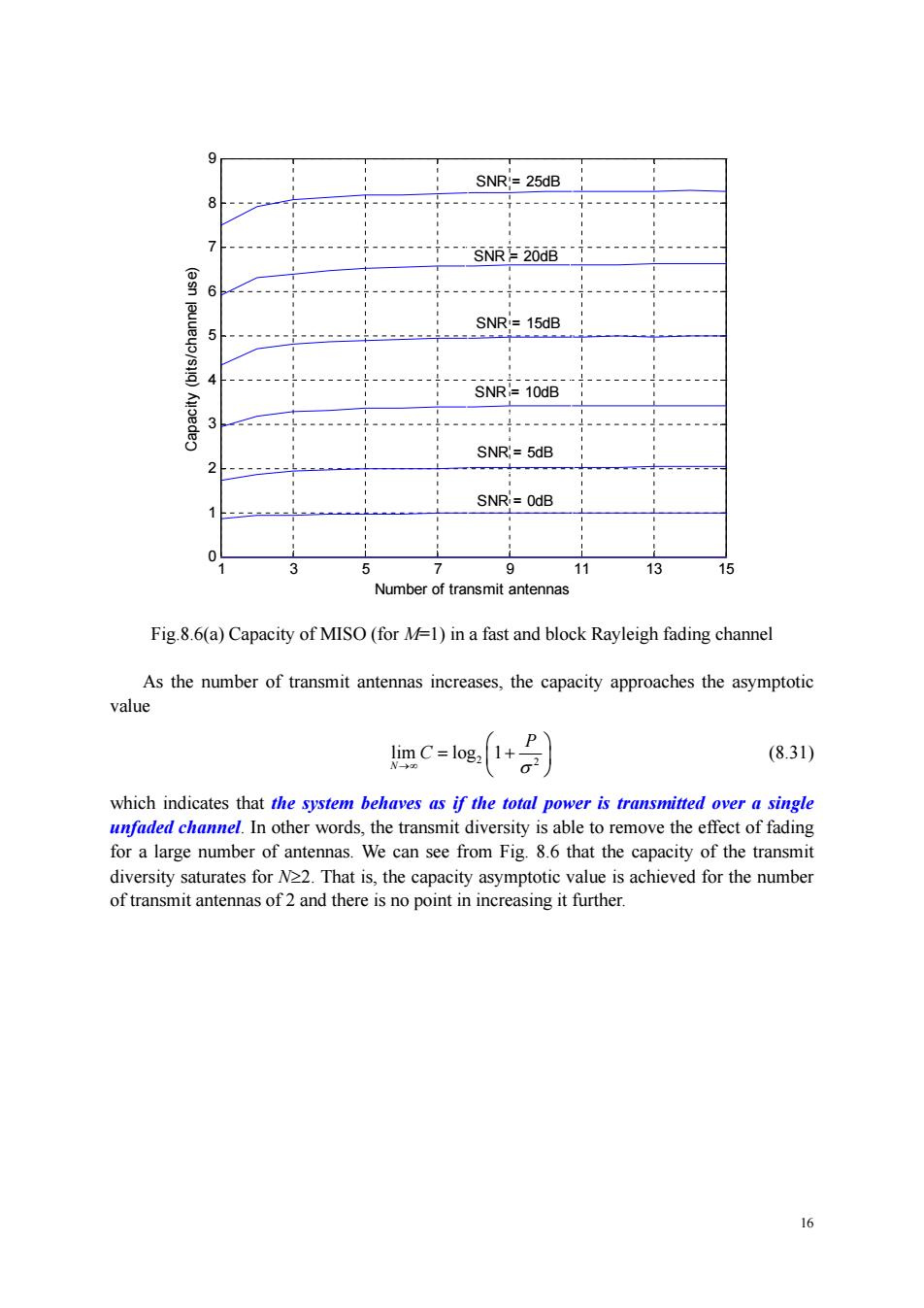正在加载图片...

SNR=25dB SNR20dB SNR;=15dB SNR=100B 2 SNR-B SNR=0dB 0 9 11 13 15 Number of transmit antennas Fig 8.6(a)Capacity of MISO(for M=1)in a fast and block Rayleigh fading channel As the number of transmit antennas increases,the capacity approaches the asymptotic -c=l(+) (8.31) which indicates that the system behaves as if the total power is transmitted over a single other words,the transmit diversity is able to remove the efect of fading for a large number of antennas.We can see from Fig.8.6 that the capacity of the transmit diversity saturates for N22.That is,the capacity asymptotic value is achieved for the number of transmit antennas of 2 and there is no point in increasing it further.16 1 3 5 7 9 11 13 15 0 1 2 3 4 5 6 7 8 9 Number of transmit antennas Capacity (bits/channel use) SNR = 0dB SNR = 5dB SNR = 10dB SNR = 15dB SNR = 20dB SNR = 25dB Fig.8.6(a) Capacity of MISO (for M=1) in a fast and block Rayleigh fading channel As the number of transmit antennas increases, the capacity approaches the asymptotic value 2 2 lim log 1 N P C (8.31) which indicates that the system behaves as if the total power is transmitted over a single unfaded channel. In other words, the transmit diversity is able to remove the effect of fading for a large number of antennas. We can see from Fig. 8.6 that the capacity of the transmit diversity saturates for N2. That is, the capacity asymptotic value is achieved for the number of transmit antennas of 2 and there is no point in increasing it further